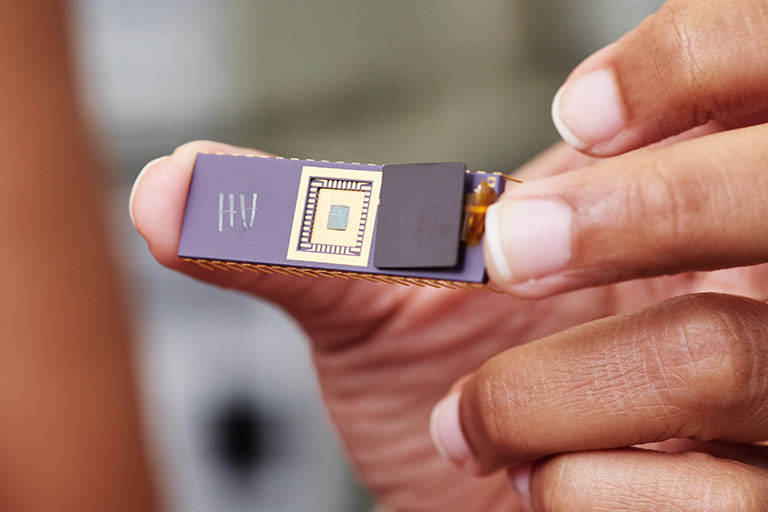
One of the most routine procedures for patients with diabetes is also one of the most painful: the frequent need to draw blood for a glucose test.
Thanks to ongoing innovation from Nicole McFarlane, those days may be numbered.
McFarlane, an assistant professor in the Min H.Kao Department of Electrical Engineering and Computer Science, has made great strides in recent years in the development of new types of sensors.
“We’ve taken a two-pronged approach,” McFarlane said. “We’ve aimed to build a better sensor that will require a smaller sample size, but also be able to reliably replace the sensors people currently use.”
McFarlane and her team have been working with analyte sensors, which are designed based on biology and can be implanted inside a patient to allow for continuous, accurate monitoring when paired with a neuro transmitter.
Doing so would not only eliminate the need for people with diabetes to prick their fingers multiple times a day, but would resolve the issue of patients skipping testing.
In keeping time with ever-changing technology, the eventual goal is to take these first-generation sensors and add machine learning, allowing for “smart” devices.
Such devices could potentially deliver medication as needed, which would allow for a reduction in or elimination of the need for insulin injection.

In addition to having practical application in the medical arena, the properties of the sensors being developed by McFarlane also hold promise in other areas. For example, as a detector at the Spallation Neutron Source (SNS) at Oak Ridge National Laboratory.
Scientists working at SNS gain access to behaviors and properties of materials at the smallest scales, allowing them to improve fields as diverse as electronics and medicine.
The problem is that a common means of measurement requires the use of photomultiplier tubes, which are expensive, require massive cooling efforts, and can be somewhat delicate, since they are inside a glass tube.
McFarlane’s sensors, on the other hand, provide solutions for all of those issues and have a key added advantage as well.
“The Department of Energy is very interested in the ability to use the sensors because they are smaller, faster, and more cost efficient than tubes,” McFarlane said. “We use the same technology as the camera in your phone, which has the added benefit of not being magnetic.”
That last point is vital because the vast magnetic field generated by equipment at SNS could have the unwanted outcome of interfering with results of experiments.
The DOE’s Office of Science was impressed enough with the idea that it recently awarded McFarlane and her team $600,000 to build out the concept for use at SNS.
Proof that, while the device itself is small, the impact it could have is huge.